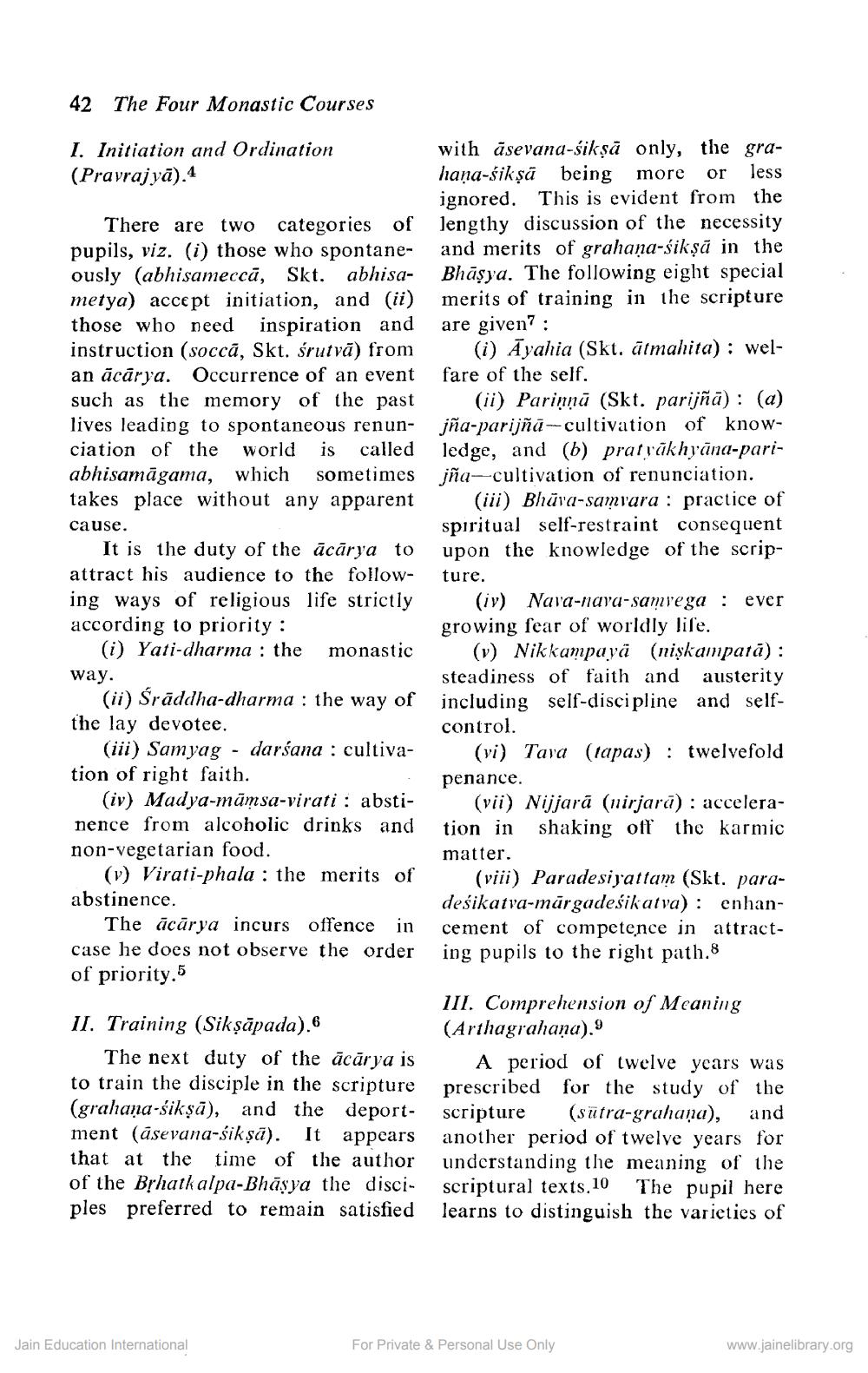________________
42 The Four Monastic Courses
I. Initiation and Ordination (Pravrajya).4
There are two categories of pupils, viz. (i) those who spontaneously (abhisamecca, Skt. abhisametya) accept initiation, and (ii) those who need inspiration and instruction (socca, Skt. śrutvā) from an ācārya. Occurrence of an event such as the memory of the past lives leading to spontaneous renunciation of the world is called abhisamagama, which sometimes takes place without any apparent
cause.
It is the duty of the acarya to attract his audience to the following ways of religious life strictly according to priority:
(i) Yati-dharma: the monastic
(iv) Madya-māmsa-virati: abstinence from alcoholic drinks and non-vegetarian food.
(v) Virati-phala: the merits of abstinence.
(iv) Nava-nava-samvega: ever growing fear of worldly life.
(v) Nikkampaya (nişkampatā): steadiness of faith and austerity
way.
(ii) Śraddha-dharma: the way of including self-discipline and selfthe lay devotee.
control.
(iii) Samyag darśana cultivation of right faith.
(vi) Tava (tapas) twelvefold penance.
(vii) Nijjara (nirjara): acceleration in shaking off the karmic
matter.
(viii) Paradesiyattam (Skt. paradeśikatva-mārgadeśikatva): enhancement of competence in attracting pupils to the right path.8
The acārya incurs offence in case he does not observe the order of priority.5
II. Training (Sikṣāpada).
The next duty of the acarya is to train the disciple in the scripture (grahaṇa-sikṣā), and the deportment (asevana-sikṣā). It appears that at the time of the author of the Brhatkalpa-Bhāṣya the disciples preferred to remain satisfied
with asevana-sikṣā only, the grahaṇa-sikṣā being more or less ignored. This is evident from the lengthy discussion of the necessity and merits of grahaṇa-sikṣā in the Bhāṣşya. The following eight special merits of training in the scripture are given? :
(i) Ayahia (Skt. atmahita): welfare of the self.
Jain Education International
(ii) Pariņņā (Skt. parijñā): (a) jña-parijñā-cultivation of knowledge, and (b) pratyākhyāna-parijña-cultivation of renunciation.
(iii) Bhāva-samvara: practice of spiritual self-restraint consequent upon the knowledge of the scrip
ture.
III. Comprehension of Meaning (Arthagrahana).9
A period of twelve years was prescribed for the study of the scripture (sutra-grahana), and another period of twelve years for understanding the meaning of the scriptural texts.10 The pupil here learns to distinguish the varieties of
For Private & Personal Use Only
www.jainelibrary.org




